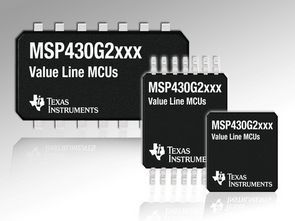
msp430x20x2_adc10_01.c ADC10, Sample A0, Set P1.0 if A0 > 0.5*AVcc
msp430x20x2_adc10_02.c ADC10, Sample A1, 1.5V Ref, Set P1.0 if A1 > 0.2V
msp430x20x2_adc10_03.c ADC10, ADC10, Sample A10 Temp, Set P1.0 if Temp ++ ~2C
msp430x20x2_adc10_04.c ADC10, ADC10, Sample A1, Signed, Set P1.0 if A1 > 0.5*AVcc
msp430x20x2_adc10_05.c ADC10, ADC10, Sample A11, Lo_Batt, Set P1.0 if AVcc < 2.3V
msp430x20x2_adc10_06.c ADC10, ADC10, Output Internal Vref on P1.4 & ADCCLK on P1.3
msp430x20x2_adc10_07.c ADC10, DTC Sample A1 32x, AVcc, Repeat Single, DCO
msp430x20x2_adc10_08.c ADC10, ADC10, DTC Sample A1 32x, 1.5V, Repeat Single, DCO
msp430x20x2_adc10_09.c ADC10, ADC10, DTC Sample A10 32x, 1.5V, Repeat Single, DCO
msp430x20x2_adc10_10.c ADC10, ADC10, DTC Sample A3-01, AVcc, Single Sequence, DCO
msp430x20x2_adc10_11.c ADC10, ADC10, Sample A1, 1.5V, TA1 Trig, Set P1.0 if > 0.5V
msp430x20x2_adc10_12.c ADC10, Sample A7, 1.5V, TA1 Trig, Ultra-Low Pwr
msp430x20x2_adc10_13.c ADC10, DTC Sample A1 32x, AVcc, TA0 Trig, DCO
msp430x20x2_adc10_14.c ADC10, DTC Sample A1-0 16x, AVcc, Repeat Seq, DCO
msp430x20x2_adc10_16.c ADC10, ADC10, DTC Sample A0 -> TA1, AVcc, DCO
msp430x20x2_adc10_temp.c ADC10, Sample A10 Temp and Convert to oC and oF
msp430x20x1_ca_01.c Comp_A, Output Reference Voltages on P1.1
msp430x20x1_ca_02.c Comp_A, Detect Threshold, Set P1.0 if P1.1 > 0.25*Vcc
msp430x20x1_ca_03.c Comp_A, Simple 2.2V Low Battery Detect
msp430x20x3_1.c Software Toggle P1.0
msp430x20x3_1_vlo.c Software Toggle P1.0, MCLK = VLO/8
msp430x20x3_clks.c Basic Clock, Output Buffered SMCLK, ACLK and MCLK/10
msp430x20x3_flashwrite_01.c Flash In-System Programming, Copy SegC to SegD
msp430x20x3_LFxtal_nmi.c LFXT1 Oscillator Fault Detection
msp430x20x3_lpm3.c Basic Clock, LPM3 Using WDT ISR, 32kHz ACLK
msp430x20x3_lpm3_vlo.c Basic Clock, LPM3 Using WDT ISR, VLO ACLK
msp430x20x3_nmi.c Basic Clock, Configure RST/NMI as NMI
msp430x20x3_P1_01.c Software Poll P1.4, Set P1.0 if P1.4 = 1
msp430x20x3_P1_02.c Software Port Interrupt Service on P1.4 from LPM4
msp430x20x3_P1_03.c Poll P1 With Software with Internal Pull-up
msp430x20x3_P1_04.c P1 Interrupt from LPM4 with Internal Pull-up
msp430x20x3_sd16A_01.c SD16A, Sample A1+ Continuously, Set P1.0 if > 0.3V
msp430x20x3_sd16A_02.c SD16, Using the Integrated Temperature Sensor
msp430x20x3_ta_01.c Timer_A, Toggle P1.0, CCR0 Cont. Mode ISR, DCO SMCLK
msp430x20x3_ta_02.c Timer_A, Toggle P1.0, CCR0 Up Mode ISR, DCO SMCLK
msp430x20x3_ta_03.c Timer_A, Toggle P1.0, Overflow ISR, DCO SMCLK
msp430x20x3_ta_04.c Timer_A, Toggle P1.0, Overflow ISR, 32kHz ACLK
msp430x20x3_ta_05.c Timer_A, Toggle P1.0, CCR0 Up Mode ISR, 32kHz ACLK
msp430x20x3_ta_06.c Timer_A, Toggle P1.0, CCR1 Cont. Mode ISR, DCO SMCLK
msp430x20x3_ta_07.c Timer_A, Toggle P1.0-2, Cont. Mode ISR, DCO SMCLK
msp430x20x3_ta_08.c Timer_A, Toggle P1.0-2, Cont. Mode ISR, 32kHz ACLK
msp430x20x3_ta_10.c Timer_A, Toggle P1.1/TA0, Up Mode, DCO SMCLK
msp430x20x3_ta_11.c Timer_A, Toggle P1.1/TA0, Up Mode, 32kHz ACLK
msp430x20x3_ta_13.c Timer_A, Toggle P1.1/TA0, Up/Down Mode, DCO SMCLK
msp430x20x3_ta_14.c Timer_A, Toggle P1.1/TA0, Up/Down Mode, 32kHz ACLK
msp430x20x3_ta_16.c Timer_A, PWM TA1-2, Up Mode, DCO SMCLK
msp430x20x3_ta_17.c Timer_A, PWM TA1, Up Mode, 32kHz ACLK
msp430x20x3_ta_19.c Timer_A, PWM TA1, Up/Down Mode, DCO SMCLK
msp430x20x3_ta_20.c Timer_A, PWM TA1, Up/Down Mode, 32kHz ACLK
msp430x20x3_ta_uart2400.c Timer_A, Ultra-Low Pwr UART 2400 Echo, 32kHz ACLK
msp430x20x3_usi_01.c USICNT Used as a One-Shot Timer Function, DCO SMCLK
msp430x20x3_usi_02.c SPI full-Duplex 3-wire Master
msp430x20x3_usi_03.c SPI full-Duplex 3-wire Slave
msp430x20x3_usi_04.c USI SPI Interface with HC165/164 Shift Registers
msp430x20x3_usi_05.c USI SPI Interface to TLC549 8-bit ADC
msp430x20x3_usi_06.c I2C Master Receiver, single byte
msp430x20x3_usi_07.c I2C Master Transmitter, single byte
msp430x20x3_dco_calib.c Basic Clock with preloaded DCO calibration constants
msp430x20x3_sd16A_03.c The SD16A sample of a single sequence of channels
Published: 2010/10/17 Tags: microcontroller projects, msp430 projects, pwm circuits
Digital PLL controlled FM Radio Circuit TEA5767 Receiver PIC16F628
Yes, let’s recent project, a “Digital and PLL controlled FM Radio Receiver System” will give. Some of them may sound like a simple project. But a very open system development project. Currently on the market that has all the features of most modern radio despite the limited resources, why did the simplistic with this project. This is a fully digital PLL controlled FM radio project.
Digital PLL controlled FM Radio Proteus isis circuit